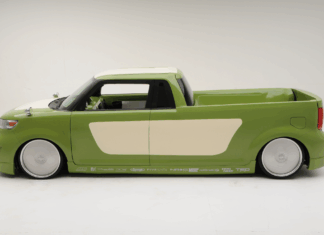Given the fact that they have been batted about like a couple of cricket balls, Britain’s Land Rover and Jaguar have scored frequently of late.
The combined company endured various owners until it parked as an outpost of the empire of Tata Motors in India, which had the good sense to provide money and restraint. That has opened the way for talented designers and engineers to assemble an array of high performance vehicles in two realms.
From Jaguar, there are luxury sedans and grand touring cars as well as its newest offering: the sensational F-Type, the company’s first two-seat sports car in 40 years.
| STATS | Starting Retail Price | As Tested Price | HP / Lb-Ft |
| 2014 Range Rover Sport HSE | $68,495 | $76,820 | 340 / |
| EPA MPG | As Tested MPG | Curb Weight LBS | |
| 17 / 23 / 19 | N/A | 4,727 |
From Land Rover, there is a lineup of go-anywhere vehicles that are the successors to the sturdy Land Rovers of history and world-wide fame. Some veer toward utility, like the Land Rover LR4, while the others are sport/luxury oriented, on and off the road.
The latter come in three versions: Range Rover, Range Rover Evoque and the subject here, the 2014 Range Rover Sport, an all new entry that slots between the Evoque and the flagship Range Rover.
Never encumbered by humility, the company calls the Sport the “fastest, most agile and responsive Land Rover ever.” That covers a lot of time and vehicles. The company started in 1947.
Early Land Rovers were rugged and utilitarian, designed to go where no motorized vehicles had ventured before. In recent years they have become luxurious and expensive playthings for the rich and famous to motor to the theater and designer stores, though they retain their legendary off-road capabilities.
There are four versions of the new Range Rover Sport: SE, HSE, Supercharged and Autobiography, ranging in price from $63,495 to $93,295. The SE and HSE are powered by a 340-horsepower, 3.0-liter V6 and the latter two come with a 510-horspower V8. Both engines are supercharged and get their power to all four wheels through an eight-speed automatic transmission that can be manually shifted.
As with all Land Rovers, the Sports are fully capable off road with permanent four wheel drive, a locking center differential and the company’s Terrain Response 2 system, which offers five settings for different conditions: general, grass/gravel/snow, sand, mud/ruts and rock crawl.
The settings adjust responses of the engine, transmission and other mechanical components to deliver traction and drivability. There’s also an automatic setting. A transmission low range and locking rear differential are available for exceptionally tough going.
At an inch shy of 16 feet, the Range Rover Sport is about six inches shorter than the flagship Range Rover. But its wheelbase—the distance between the front and rear axles—has been extended seven inches to increase space for rear seat passengers.
Curiously, although the Range Rover is a five-passenger vehicle, the smaller Sport has an optional third row seat that can accommodate two children or small adults. The company calls the configuration a 5+2. But 4+3 would be a better description because the center position in the second row is high, hard and unfit for human habitation.
A panoramic glass sunroof is available as an option. It has a motorized sunshade to block powerful rays of sunlight, but unfortunately—following a current fad in luxury vehicles—it is made of a translucent perforated cloth. Sunshades should be opaque. Another major shortcoming is an obtuse and frustrating navigation system.
The tested Range Rover Sport was an HSE model with the V6 engine and an air suspension system, which proved more than up to the task in several hours traversing a twisting, deeply rutted and hilly off-road course on a ranch in California’s Santa Cruz mountains. Among other things, it was capable of fording streams up to 33.5 inches deep.
But it also cruised as serenely as a luxury sedan on freeways and handled curving mountain roads with confidence. The steering has a hefty feel and good feedback. Though the Sport features a slightly lower driving position than its predecessor, it is still nearly six feet tall and is no sports sedan.
The Sport is manufactured of high strength aluminum, which Land Rover says enabled a weight reduction of 800 pounds from its predecessor. Still, at 4,727 pounds, it is no frugal lightweight.
Option packages bumped the tester’s base price of $68,495 up to $76,820. Equipment included adaptive cruise control, 21-inch wheels, the panoramic sunroof, upgraded audio, navigation and a full suite of safety equipment like sophisticated traction and stability control that also contributed to off-road capability.
Take a look at the 2014 Range Rover Sport in TFLcar’s video Mega Mashup:




























